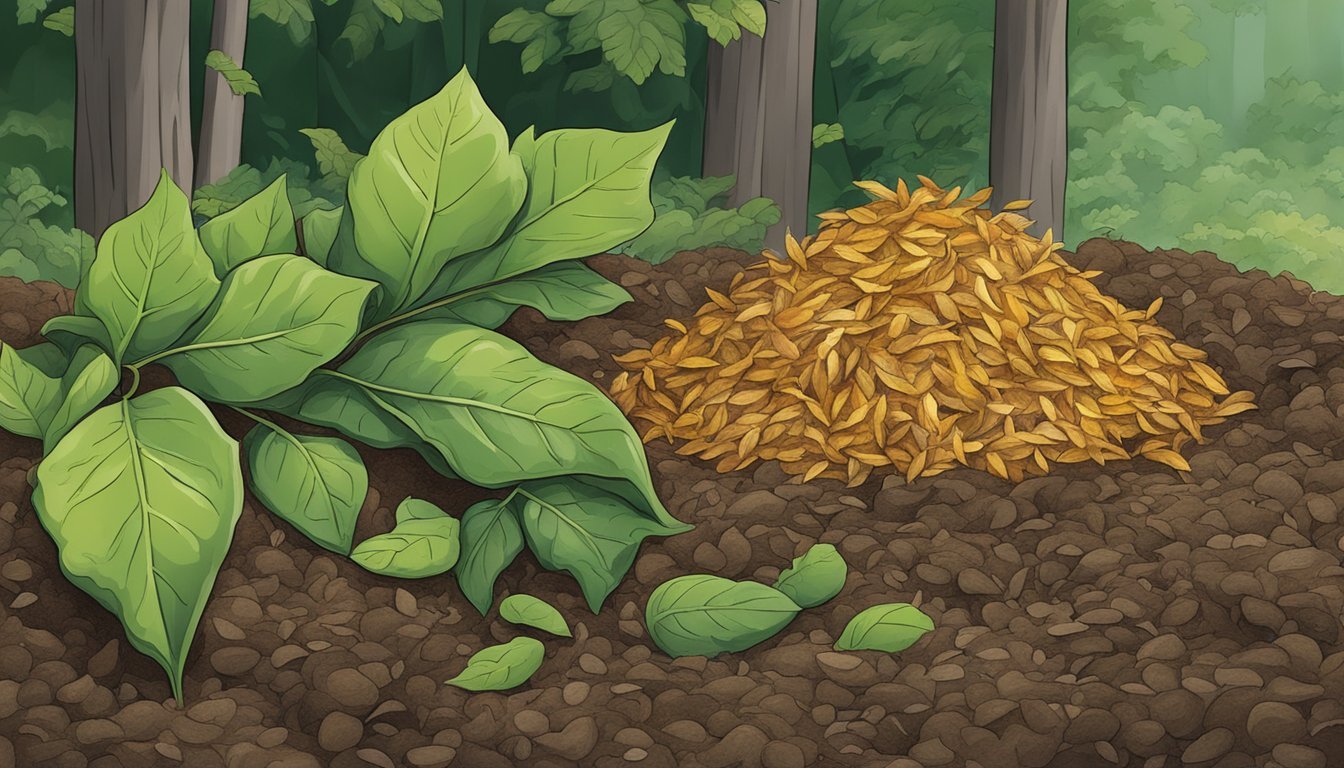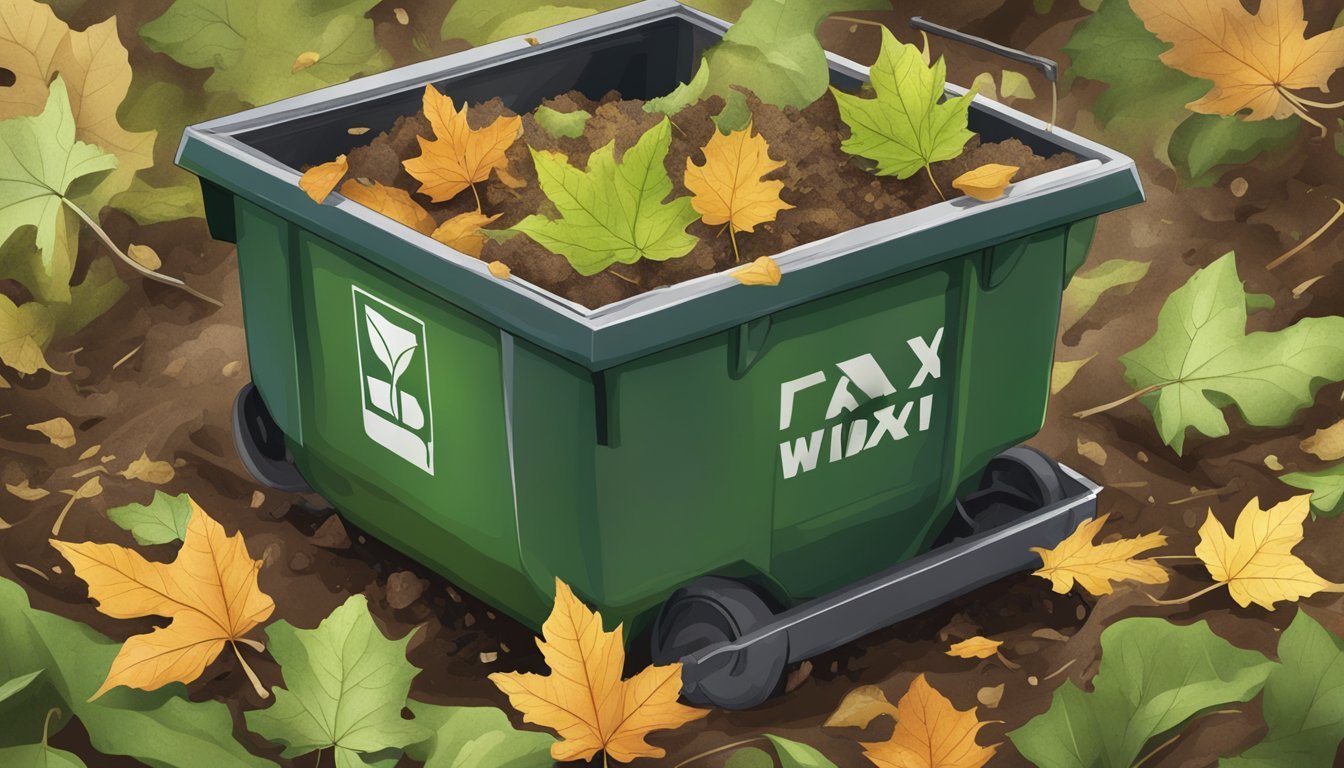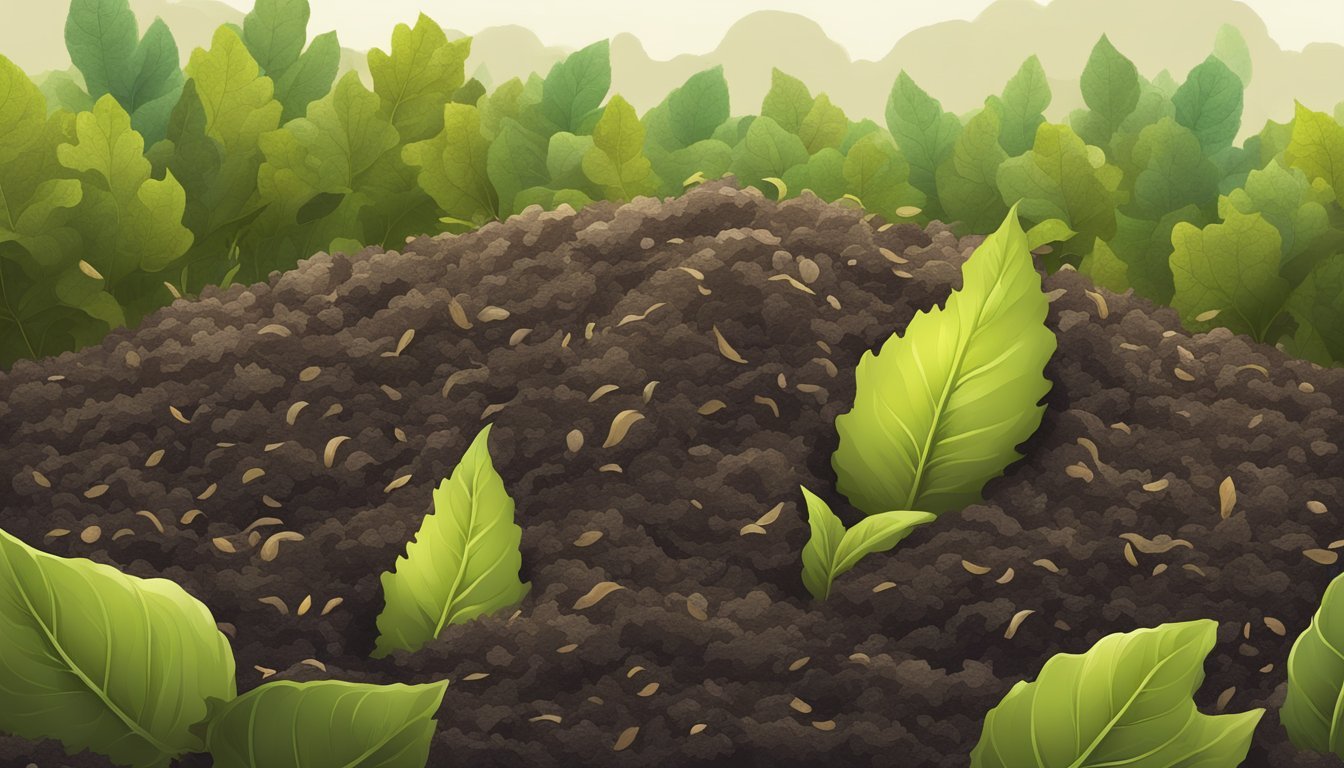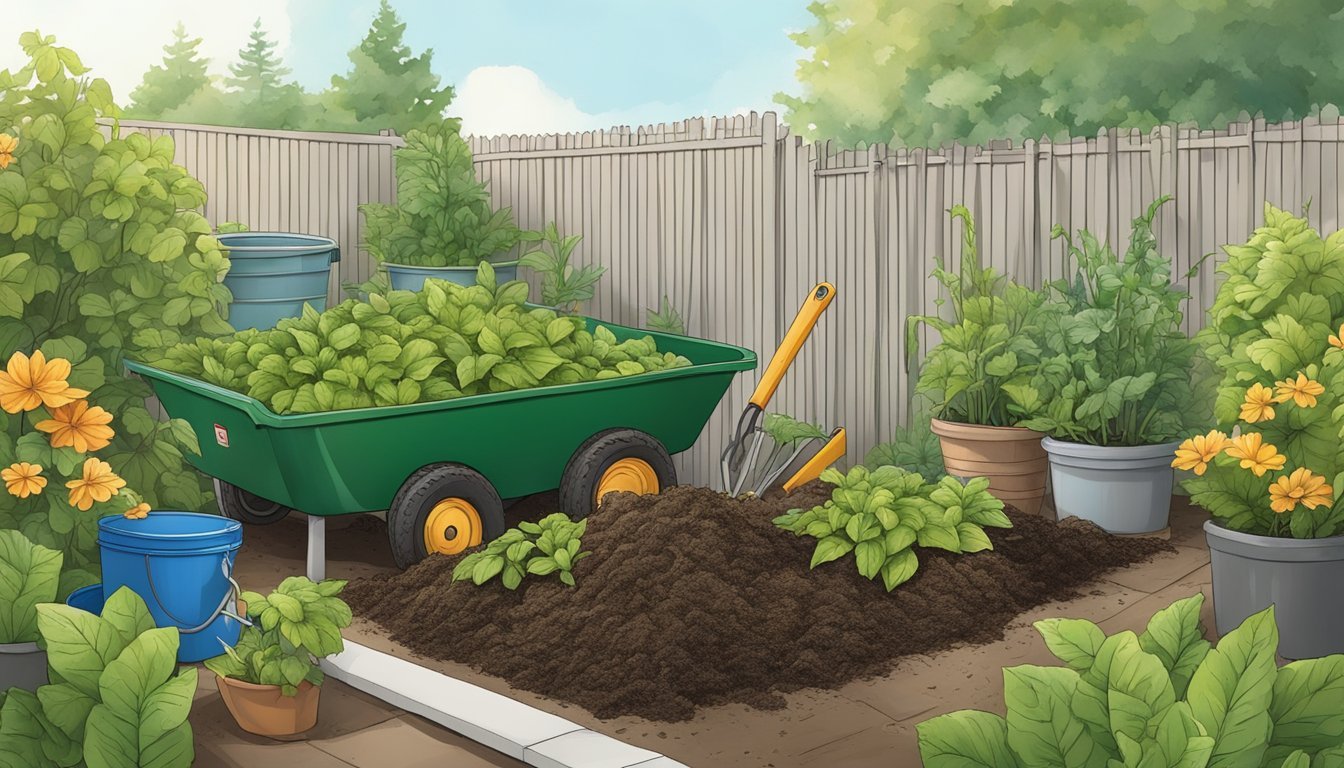Can You Compost Waxy Leaves?
Insights into Composting Challenges
Composting is a process that transforms organic matter into nutrient-rich soil amendment, benefiting garden health and plant growth. While most leaves can be composted, the presence of a waxy coating on certain leaves often raises questions about their suitability for compost piles. These waxy leaves come from plants like laurel, magnolia, and holly, which produce this natural barrier to conserve water and protect against pests.
The decomposition rate of leaves in compost can be influenced by several factors, including their chemical composition and physical traits. Waxy leaves are known to break down more slowly than their non-waxy counterparts due to the resilient nature of the wax coating. Despite this, they can still contribute to soil improvement when effectively integrated into a composting regimen. However, it's essential to strike a balance; incorporating too many waxy leaves without proper adjustment could lead to a longer composting process.
Incorporating waxy leaves into a compost pile requires an understanding of their impact on the composting process. They should be mixed with a variety of other organic materials to promote a more balanced decomposition. This mixture can lead to high-quality compost, which is invaluable for soil improvement, contributing to its structure, moisture retention, and nutrient content. Therefore, even though waxy leaves decompose at a slower pace, they can still play a role in creating a robust compost that enhances soil fertility.
Basics of Composting
Composting is an essential process for recycling organic matter into a valuable soil amendment, and the inclusion of leaves can significantly enhance the nutrient profile of the resulting compost.
What Is Composting?
Composting is the aerobic decomposition of organic materials by microbes, turning them into a rich soil additive known as compost. The process requires balancing four key elements:
Carbon: Dry, brown materials like twigs and dead leaves provide carbon.
Nitrogen: Green materials such as grass clippings and fruit scraps supply nitrogen.
Moisture: Water is crucial to sustain microbial activity.
Oxygen: Regular aeration by turning the compost pile promotes decay and prevents odors.
Both carbon and nitrogen are vital for microbes to thrive—carbon acts as an energy source, while nitrogen is a protein source for their growth.
Benefits of Composting Leaves
Nutrient Enrichment: Leaves are a significant source of carbon, which balances the nitrogen-rich materials in a compost pile. This balance is critical for a nutrient-rich end product suitable for amending soil.
Soil Structure Improvement: Leaf compost contributes to better aeration and drainage in soil. It also enhances the soil's ability to retain moisture, promoting healthier plant growth.
In summary, incorporating leaves into a compost pile enhances the overall health and utility of the compost, benefitting garden soil and plant vitality.
Understanding Waxy Leaves
Waxy leaves, common in plants like magnolia, laurel, and eucalyptus, have unique properties that pose challenges for composting. This section delves into the specifics of these leaves and the difficulties they present in the decomposition process.
Properties of Waxy Leaves
Waxy leaves are characterized by a glossy or shiny surface, which is the result of a protective layer known as the cuticle. This layer, primarily made of cutin and wax, serves to protect leaves from water loss and disease.
Common Plants with Waxy Leaves:
Magnolia
Laurel
Eucalyptus
Cuticle Composition: Mainly cutin and wax.
Function: Prevents water loss and wards off pests and diseases.
Challenges in Composting Waxy Leaves
The very properties that make waxy leaves resilient in nature also make them resistant to breaking down in a compost pile. Their thick, waxy cuticles hinder the entry of microorganisms and moisture, slowing the decomposition process.
Decomposition Rate: Slower than non-waxy leaves due to resistant cuticle layer.
Microorganism Accessibility: Limited, as the waxy surface blocks easy penetration.
Moisture Absorption: Reduced, making the leaves less amenable to breaking down.
In assessing the compostability of waxy leaves, one should consider the prolonged time required for these leaves to decompose and the impact that might have on the composting timeline and process.
Preparation of Leaves for Composting
Composting leaves involves two critical steps: shredding to increase surface area for quicker decomposition and balancing the carbon-rich leaves with nitrogen-rich materials. These processes help accelerate the creation of nutrient-rich compost.
Shredding Leaves
Shredding leaves is essential for speeding up their decomposition. Leaves left intact take longer to break down due to their waxy surface which inhibits moisture and microorganism access. Gardeners can use a lawn mower to shred leaves effectively:
Gather dry leaves into rows or piles.
Use a mower with a bagger to collect the leaves as they are shredded.
Run the mower over the leaves several times to produce small leaf pieces.
Shredded leaves have more surface area exposed to microbes, accelerating the composting process.
Mixing Leaves with Other Greens
To create balanced leaf compost, it is important to mix the carbon-rich leaves (browns) with nitrogen-rich materials (greens). This enriches the pile and helps maintain proper moisture levels:
Mix one part green materials like vegetable scraps, grass clippings, or coffee grounds with three parts shredded leaves.
Stir the pile to incorporate the greens evenly among the browns.
Ensure the compost is moist, not soaked. Sprinkle water over dry spots if necessary.
Mulching your compost pile with a thin layer of soil can add microorganisms that help break down organic materials. Mixing leaves with other compostable materials creates a diverse environment for microbes, promoting efficient composting.
Optimizing the Compost Pile
To successfully compost waxy leaves and other organic materials, one must pay diligent attention to the balance of components and the maintenance of ideal conditions within the compost pile.
Balancing Browns and Greens
Compost requires a balanced mix of brown and green materials to decompose effectively. Brown materials, such as dried waxy leaves, provide carbon, while green materials offer nitrogen. A recommended ratio is 30 parts brown to 1 part green. Shredding the leaves increases the surface area and helps speed up the composting process.
Brown Materials (Carbon-rich):
Shredded waxy leaves
Straw
Hay
Cardboard
Green Materials (Nitrogen-rich):
Grass clippings
Vegetable scraps
Coffee grounds
Manure
Maintaining the Right Conditions
Temperature and oxygen play crucial roles in composting. A compost pile should maintain a temperature between 135-160°F (57-71°C) for optimal microbial activity. Regular turning of the compost aids in aeration and maintaining consistent temperatures throughout the pile.
Temperature Monitoring:
Use a compost thermometer to check the pile's core temperature.
Turning Frequency:
Turn the compost weekly to reintroduce oxygen and ensure even decomposition.
By adhering to these guidelines, one can create a nutrient-rich compost even when incorporating challenging materials like waxy leaves.
Composting Through Seasons
Seasonal changes bring different dynamics to the composting process, especially concerning the abundance of leaves in autumn and the slowed decomposition in winter.
Autumn Leaf Drop
During autumn, trees shed their leaves, offering a bounty of organic material for composting. These fallen leaves are rich in minerals and provide the necessary carbon balance to a compost pile. However, waxy leaves may decompose more slowly and should be shredded to accelerate the decomposition process. To optimize leaf composting in autumn:
Shred the leaves: Smaller pieces decompose faster.
Balance your pile: Mix in green material with the leaves to improve decomposition.
Winter Composting
In winter, the composting process slows drastically due to lower temperatures. Nevertheless, composting can continue with some adjustments. Key considerations for winter composting include:
Insulation: Ensure your pile retains as much heat as possible—cover it with a tarp or extra organic material.
Aeration: Turn your pile less frequently to preserve heat but ensure it still gets oxygen.
Composters should remember that even in the colder months, the pile should remain slightly moist, as overly dry conditions can halt the decomposition process.
Troubleshooting Common Issues
In the composting process, one might encounter issues with waxy leaves such as slow decomposition or introduction of pests. It is crucial to understand the proper methods to encourage rapid breakdown and prevent harmful organisms.
Dealing with Slow Decomposition
Waxy leaves often break down more slowly due to their protective coating. To accelerate decomposition, one should:
Shred the leaves before adding them to the compost to increase the surface area and facilitate quicker breakdown.
Balance the compost pile with a mixture of green (nitrogen-rich) and brown (carbon-rich) materials, ensuring that waxy leaves are not overwhelming the pile.
In the event the compost becomes soggy, improve aeration by turning the pile regularly. This prevents the anaerobic conditions that slow down the composting process.
Preventing Pests and Diseases
To deter pests and minimize the risk of disease in the compost:
Ensure the pile has adequate airflow and is not overly moist, as soggy conditions can attract pests and harbor pathogens.
Avoid adding diseased plants into the compost, as these can spread pathogens to the pile and subsequent garden soil.
Utilize a compost bin with a lid or a layer of soil or finished compost on top of the pile to act as a barrier against vermin.
By addressing these issues promptly and effectively, one can maintain a healthy compost pile that converts waxy leaves into valuable garden compost.
Using Leaf Compost in Gardening
Leaf compost serves as an excellent soil amendment and a natural fertilizer, enriching garden soil with essential nutrients and improving its structure.
Fertilizing with Leaf Compost
Leaf compost is rich in nutrients that plants require for growth. As it breaks down, it releases nitrogen, phosphorus, and potassium—key elements routinely found in commercial fertilizers. Moreover, leaf compost delivers a slow release of these nutrients over time, reducing the risk of over-fertilization and subsequent plant burn. Gardeners can apply leaf compost to their garden beds by:
Sprinkling a 2- to 3-inch layer of compost around the base of plants to act as a mulch
Mixing compost into the top few inches of soil for new planting areas
Using compost as a component of potting mixes for container gardens
Improving Soil Structure
Incorporation of leaf compost significantly enhances the soil texture and overall structure. The organic material in the compost contributes to the formation of humus, a complex substance that improves the retention of moisture and nutrients in the soil. Consequently, the garden soil becomes more friable, which promotes root growth and allows for better air and water infiltration. The ways leaf compost improves soil include:
Increasing aeration: Loosens dense, compacted soil, allowing roots to expand and breathe
Enhancing water retention: Helps sandy soils hold moisture, while also improving drainage in clay soils
Building soil integrity: Continuous application over time enriches the soil with organic matter, fostering a vibrant ecosystem of beneficial microbes
Through these methods, gardeners harness the full potential of leaf compost to create a more robust, nutritious, and sustainable environment for their plants.
Considerations for Specific Leaf Types
When composting leaves, it is crucial to understand how different types respond in a compost pile. Certain leaves compost well, while others may need special treatment or should be avoided altogether due to their chemical makeup.
Composting Oak and Maple Leaves
Oak Leaves: Oak leaves are a rich source of nutrients but are high in tannins and can be acidic. To compost oak leaves effectively, one should mix them with other, less acidic organic materials to balance the pH. It's also advisable to shred them to hasten decomposition, as oak leaves are quite tough and may take longer to break down.
Maple Leaves: Maple leaves are an excellent addition to compost. They break down relatively quickly and mingle well with other compost materials. However, they should still be shredded for faster composting and to prevent matting, which can impede airflow within the pile.
Avoiding Toxic and Acidic Leaves
Black Walnut Leaves: These leaves contain juglone, a naturally occurring compound toxic to many plant species. It is best to avoid composting black walnut leaves, as juglone can leach into the compost, making it harmful for future plant growth.
Pine Needles: While not toxic, pine needles are highly acidic and can take a long time to decompose. If one chooses to compost pine needles, they should do so sparingly and mix generously with high-nitrogen materials to counterbalance their acidity.
Buckeye Trees: Leaves from buckeye trees should not be composted. Like black walnut, they can release substances that might be harmful to other plants. It's safest to dispose of these leaves separately and not to include them in the compost pile.
Alternative Uses for Waxy Leaves
Waxy leaves, despite being challenging to compost, can still be valuable in garden management. They have uses that capitalize on their slow decomposition rates and structural attributes.
Creating Leaf Mold
Leaf mold is a beneficial soil conditioner. It is created as leaves slowly decompose over time, typically taking one to two years. Waxy leaves like those from magnolia and ginkgo trees are particularly adept at forming leaf mold because they break down at a gradual pace, enriching the soil with a steady release of nutrients. Gardeners can pile waxy leaves in a shaded area to encourage fungal breakdown and subsequently apply the leaf mold to improve soil structure.
Mulching with Undecomposed Leaves
Undecomposed waxy leaves can be spread as a mulch layer over garden beds. This use leverages their slow decay to provide long-term benefits:
Retention of moisture: The leaves act as a barrier, reducing evaporation from the soil surface, which helps maintain moisture levels.
Landscape protection: They insulate the soil from temperature fluctuations and protect against erosion.
One must not apply the mulch too thickly, as excessive layers can impede water penetration. A balance should be struck to optimize the protective and insulative qualities without hindering soil access.
Environmental Impact and Sustainability
Composting waxy leaves can be instrumental in waste reduction and enhancing biodiversity within ecosystems. By focusing on the sustainability aspect of this practice, one can understand its environmental benefits.
Reducing Waste with Leaf Compost
Leaf composting significantly cuts down on organic waste that would otherwise end up in landfills. Instead of discarding waxy leaves, which are often kitchen scraps for many gardeners, they can be composted. This reduces methane emissions—a potent greenhouse gas—and saves valuable space in landfills. Composting these leaves returns nutrients back to the soil, promoting a cycle of sustainability.
Benefits to soil when composting waxy leaves:
Enhances nutrient content
Improves water retention
Reduces the need for chemical fertilizers
Encouraging Biodiversity
Composting goes beyond just managing waste; it's a practice that promotes biodiversity in gardens. When gardeners compost waxy leaves, they create a rich, nourishing soil amendment that supports a wide array of organisms. These organisms include insects, worms, and microorganisms that are crucial for soil health and, in turn, plant diversity. A diverse garden attracts various species of birds and beneficial insects, creating a more resilient and sustainable ecosystem.












